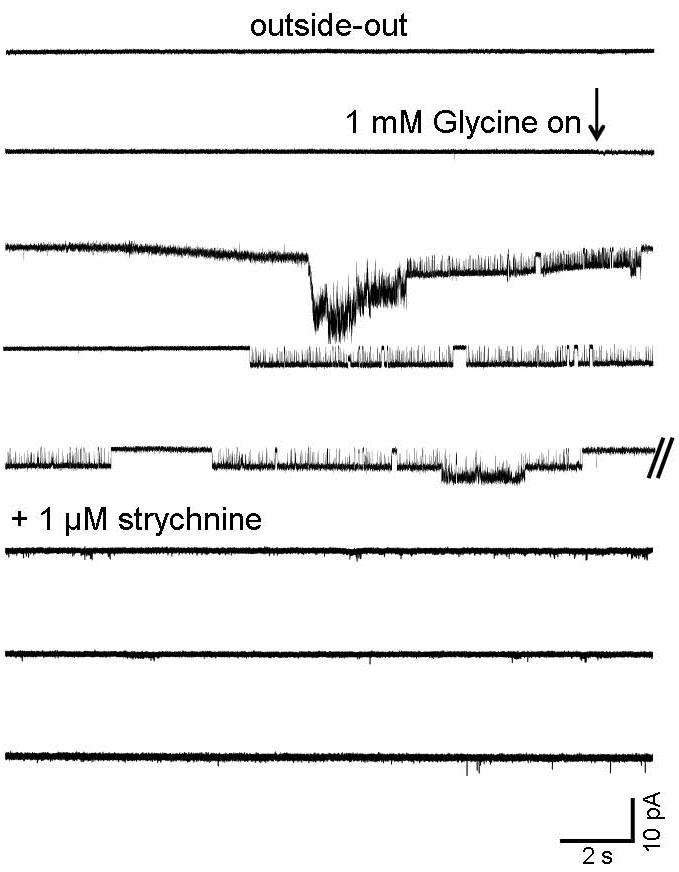Figure 3.

Onset of channel activity during glycine application to an outside-out patch and block by strychnine: no channel openings were detected in this patch before glycine was applied. The start of glycine superfusion (indicated by the arrow) is accompanied by an increase in noise (agonist is superfused at a faster rate than control medium) and by a baseline drift (because of a change in bath level). Glycine reaches the patch after a short delay because of the distance between the inflow and the patch, which is held as close as possible to the surface in order to reduce noise. At first several channels open simultaneously (third line), but the onset of desensitization allows single clusters to be detected (line 4). Here a low amplitude cluster occurs on top of a high amplitude one (double event on line 5, all taken from a continuous trace). Strychnine (1 μM) was applied at the end of the experiment and abolished glycinergic activity within one minute from the onset of application (not shown). The slight increase in baseline noise is due to the progressive deterioration of the seal during the recording.
